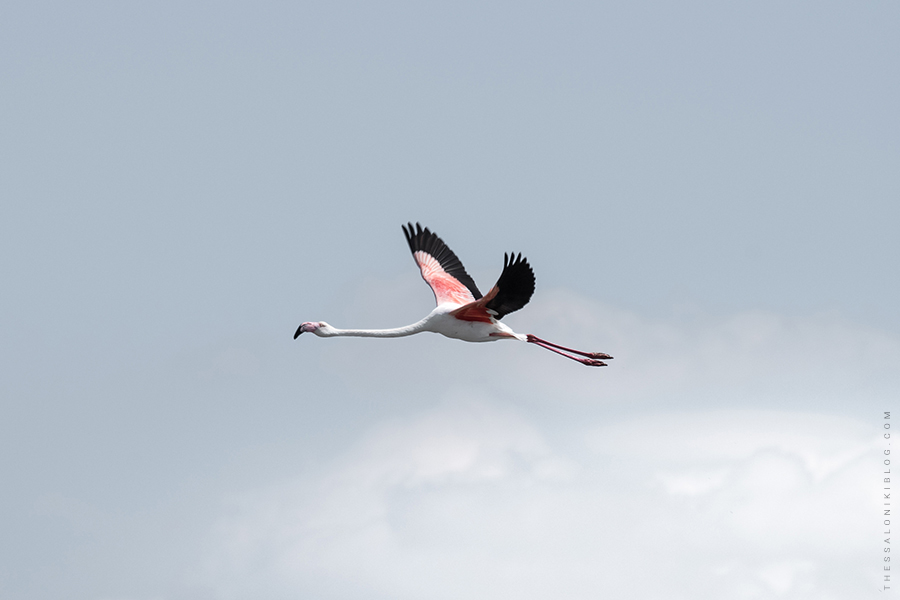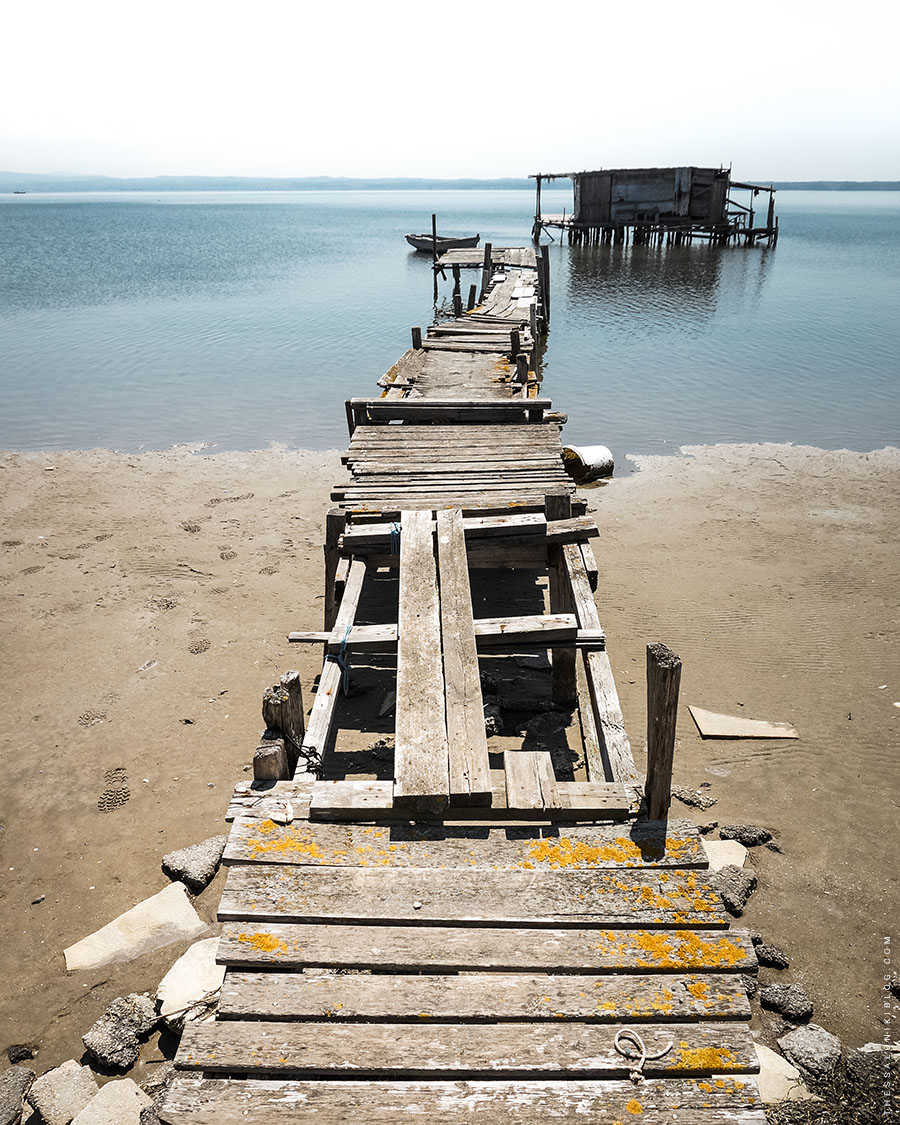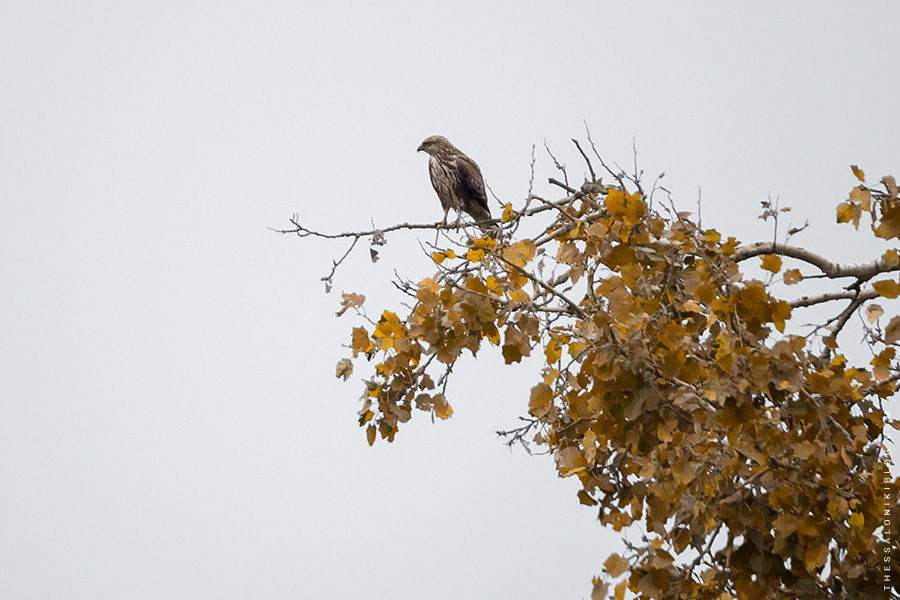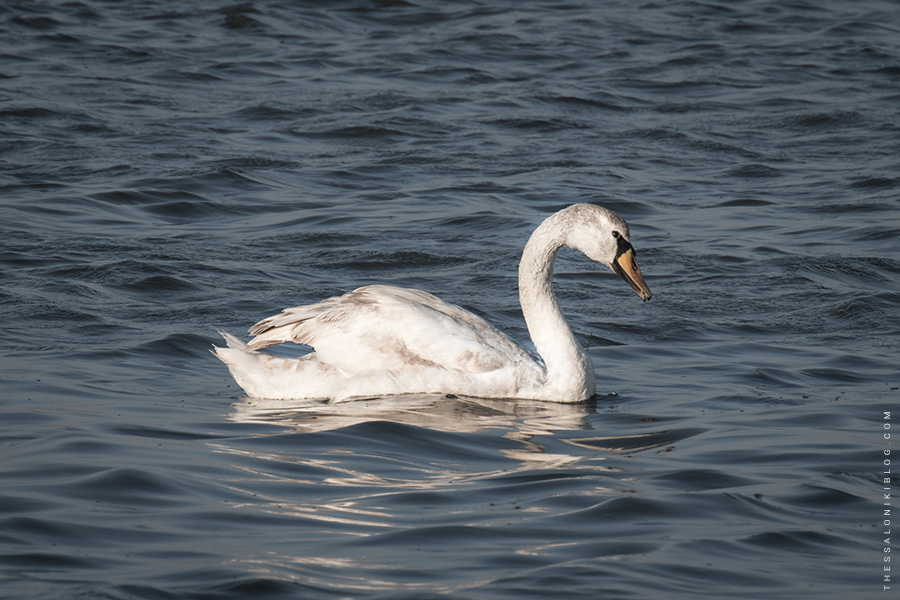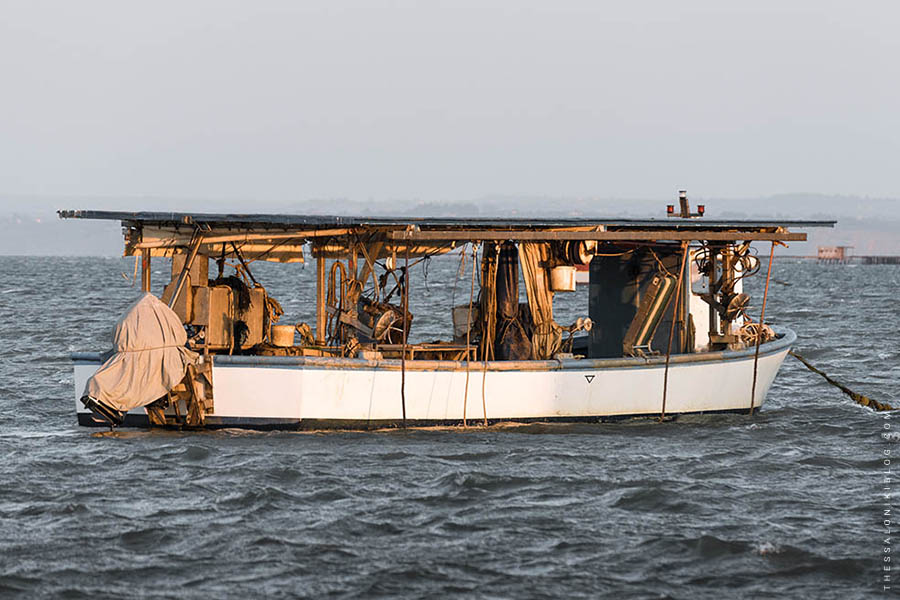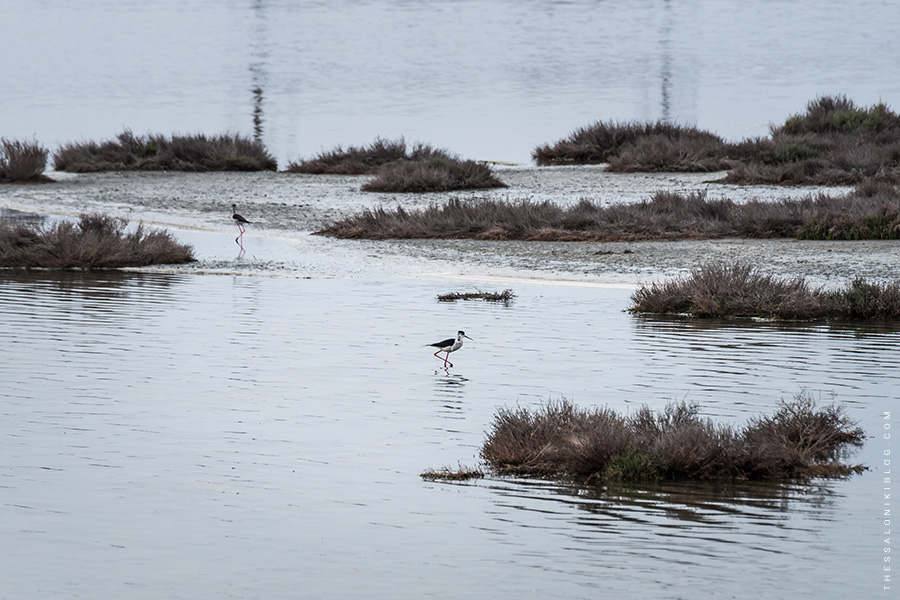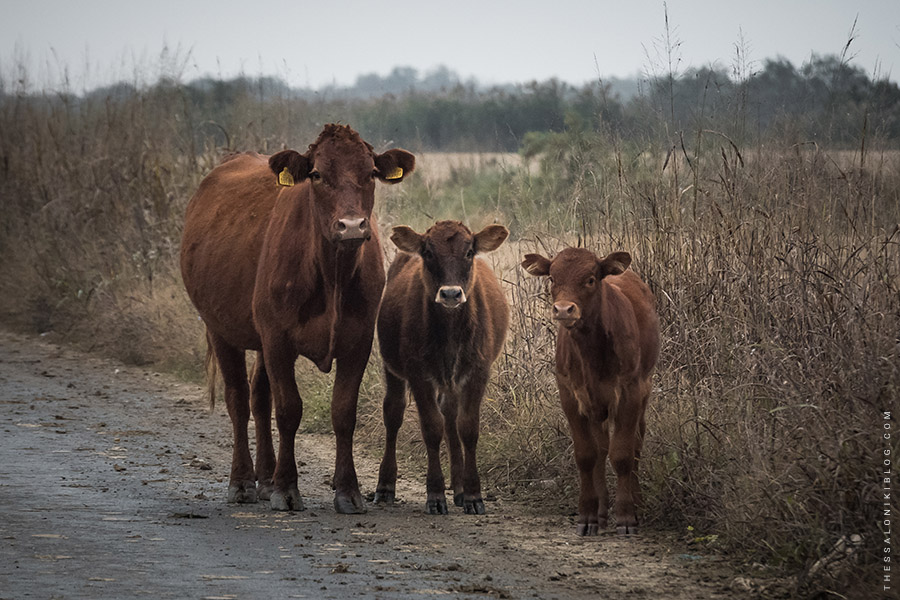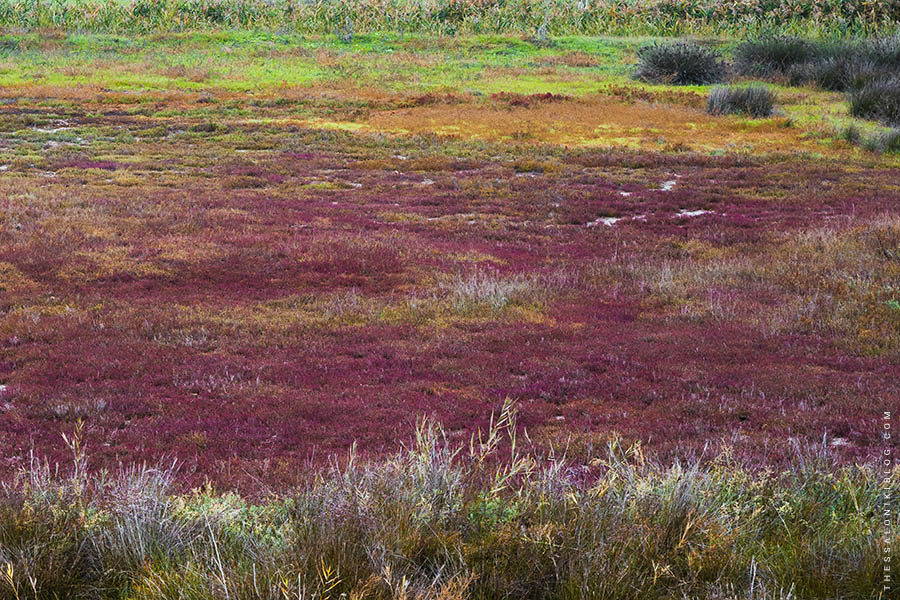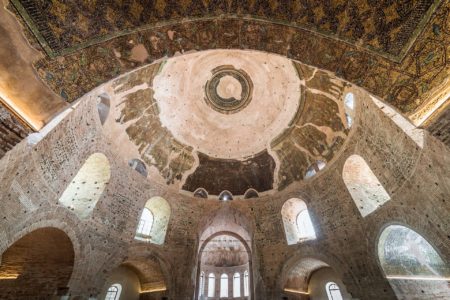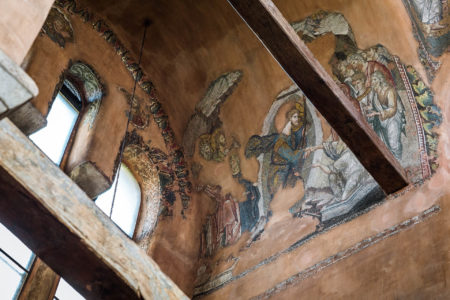AXIOS DELTA WETLANDS: THE "NEW ORLEANS" OF THESSALONIKI
Last update: May 3, 2020
Axios Delta National Park is one of the most important wetlands in Europe with hundreds of fauna and flora species in its boundaries including many rare and protected species of birds. It is located along the northwest coast of Thermaikos Gulf, just 10km west from the center of Thessaloniki, and it consists of the delta and the riverbed of the Axios river, the Kalochori lagoon, the estuaries of the Gallikos and Loudias rivers, the delta of Aliakmonas, and the wetlands of Nea Agathoupoli and Alyki Kitrous at the southwest (see the region on Google Maps).
The total area of the national park is approximately 33,800 hectares and it lies on the migration route of millions of birds. It is considered a place of great ornithological importance and it is protected by the “Ramsar Convention” since 1971 and by the European network “Natura 2000” since 1996. According to the official site of the national park, the area consists of 25 types of habitats (two of which are priority habitats on a European level) with 295 species of birds (2/3 of all the bird species in Greece), 40 mammals, 18 reptiles, 9 amphibians, 7 invertebrates, and 350 species and subspecies of plants.
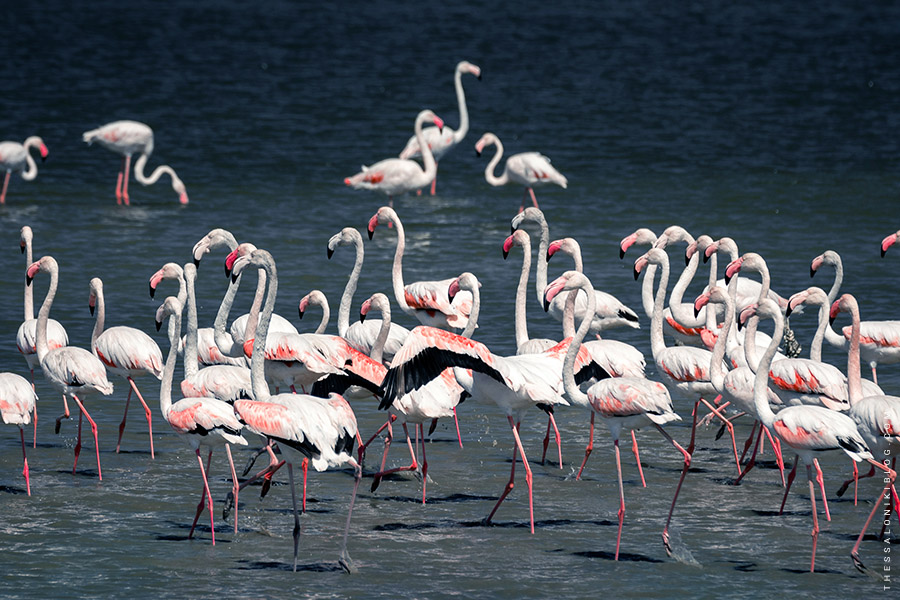
Among the bird species that live in the wetlands are the greater flamingo, the dalmatian pelican, the mute swan, the great and the pygmy cormorant, the mallard, the little egret, the white-tailed eagle, and many more populous or rare species that either nest and breed here, stay only during the warm or the cold months of the year, or find a temporary refuge during their migration. The area is also inhabited by water buffaloes (at the estuary of Gallikos river), ground squirrels, otters, wildcats, foxes, turtles, and even wild horses at the west embankment of the Axios river.
Apart from the unique natural environment and the several species of wildlife, the special character of Axios Delta National Park has been shaped throughout the years by the human intervention and the agricultural activities such as rice cultivation, cattle farming, salt production (at the Alyki Kitrous salt pans), and by the many picturesque wooden cabins of the fishermen and the mussel farmers at the Axios Delta and the estuary of Loudias. Especially, the mussel cultivation in the area is 80-90% of the total mussel production in Greece, whereas the rice fields cover the 1/3 of the entire park.
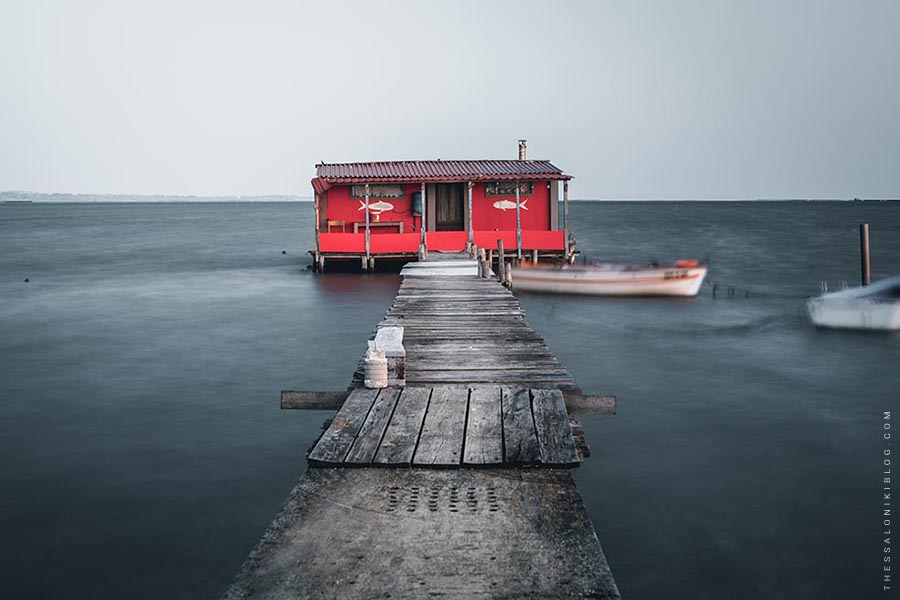
From the late ’70s and during the decades that followed, one of the main attractions at the Kalochori Lagoon and the Axios Delta was the fishermen’s wooden cabins that were used as fish taverns. These taverns, although quite shoddy, were also unique and charming places that offered an original experience in a beautiful natural environment. However, in 2017, they were shut down by the state since none of them had a proper license.
The most famous of these fish taverns was called “Bangladesh”, a name that was later given to the entire area. Some of them can still be found along the coast, abandoned or with a different use. Yet, if you would like to visit a similar place today, you can still do it at a new place that was recently open on the embankment of the Kalochori lagoon (see its location here).
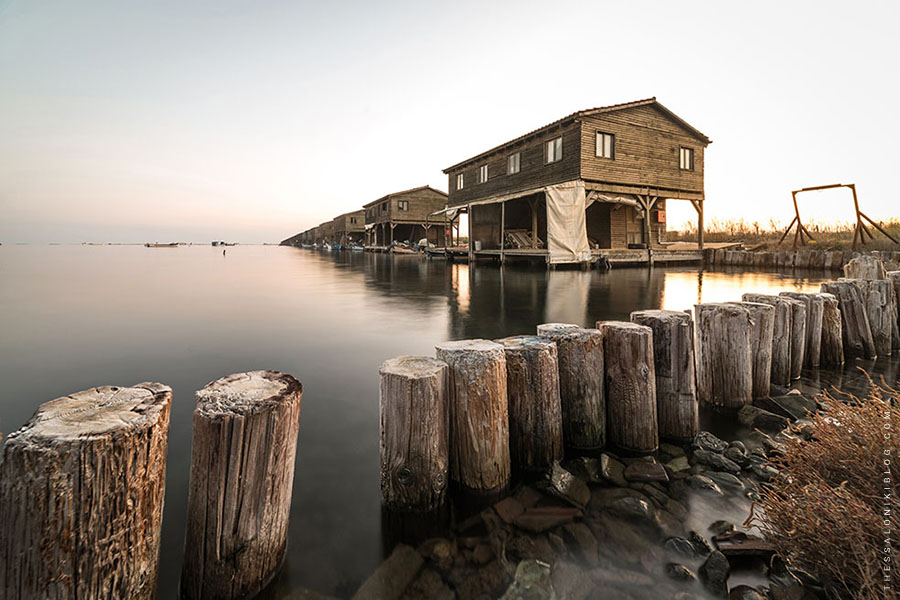
Axios Delta National Park is ideal for activities such as nature exploration, birdwatching, photography, and for everyone interested in learning about an eco-system, its wildlife, and how it can be harnessed and protected at the same time. Before you visit the area, make sure to read the useful information and the dos and don’ts with important guidelines and advice outlined by the Management Authority of the park.
For your first visit, it is recommended to start your exploration from the closest to Thessaloniki “gateways” to the park: the Kalochori lagoon (where you can see the impressive flamingos depending on the season) and the Axios Delta Information Center at the town of Chalastra. At the latter, you can be fully informed (for example about which species reside in the park during the days of your visit), get maps of the area, and then follow one of the several recommended routes charted by the national park’s Management Authority.
A third “gateway”, further from the city of Thessaloniki, is the birdwatching tower at the wetlands of Nea Agathoupoli. From there, you can continue your exploration towards the lagoon and the salt pans of Alyki Kitrous, located 17km south of the tower. Alyki Kitrous is a separate wetland from the rest of the national park, where a larger group of flamingos resides throughout the whole year. It is located 62km southwest of Thessaloniki and 17km north of Katerini.
It is recommended to explore the Axios Delta National Park with a four-wheel-drive vehicle. You can, however, reach the Kalochori lagoon with public bus no.40 (you can get on at the New Railway Station of Thessaloniki and then get off at the bus-stop Davaki). Also, you can get to Nea Agathoupoli with a long distance bus from KTEL Makedonia.
